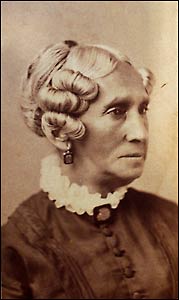Sarah Harris Fayerweather facts for kids
Sarah Harris Fayerweather (born April 16, 1812 – died November 16, 1878) was an important African-American activist. She worked hard to end slavery (she was an abolitionist). She also helped make schools open to all students, no matter their race. This is called school integration.
When she was 20, in January 1833, Sarah went to Prudence Crandall's Canterbury Female Boarding School in Canterbury, Connecticut. This school was very special. It was the first school in the United States to welcome students of different races.
Contents
Early Life and School Days
Sarah Ann Major Harris was born on April 16, 1812. Her hometown was Norwich, Connecticut. Her parents, William Monteflora Harris and Sally Prentice Harris, were free farmers. Sarah was of African descent. She was the second oldest of their twelve children. Her family raised her in the Orthodox Congregational Church in Canterbury.
In September 1832, Sarah asked to join the Canterbury Female Boarding School. The school's owner, Prudence Crandall, wrote about Sarah's visit. She shared it in a newspaper called The Liberator. Sarah told Miss Crandall, "I want to learn more. Enough to teach other Black children." She also said she would understand if it caused trouble for the school.
After thinking about it, Miss Crandall let Sarah join. When most of the other students' parents took their children out of the school, Miss Crandall still refused to make Sarah leave.
The people in Canterbury were very against the school being integrated. Because of this, Miss Crandall closed the school. But she reopened it in 1833. This time, it was only for African-American students. Sarah kept going to the school. She faced mean treatment and was often left out. In September 1834, a large group of angry people gathered at the school. Miss Crandall worried about her students' safety. So, she closed the school for good.
Family Life and Activism
Sarah married George Fayerweather, Jr. on November 28, 1833. George was a blacksmith. He was ten years older than Sarah and was of mixed race. In 1841, the couple moved to New London, Connecticut. Later, in 1855, they moved to Kingston, Rhode Island. They raised their eight children there.
Both Sarah and George believed strongly in ending slavery. They also believed in equal rights for all races. Sarah joined the Kingston Anti-Slavery Society. She went to many anti-slavery meetings. These meetings were held by the American Anti-Slavery Society in different cities. Sarah also wrote letters to her old teacher, Prudence Crandall. She even wrote to Frederick Douglass, a famous former slave and abolitionist. Sarah read The Liberator newspaper until it stopped publishing in 1865. She was also active in her church. She joined the Sunday school class at Kingston's Congregational church.
Later Years and Death
Sarah lived nine years longer than her husband. She passed away on November 16, 1878. Her cause of death was a swelling in her neck. She was buried in the Old Fernwood Cemetery in Kingston, Rhode Island.
Legacy and Honors
Sarah Harris Fayerweather is remembered for her courage. In 1970, a building at the University of Rhode Island was named after her. It is called Fayerweather Hall and is a dormitory for students. The Fayerweather Craft Guild is also named in her honor. It is located in Kingston. This was once the home and blacksmith shop of the Fayerweather family.


